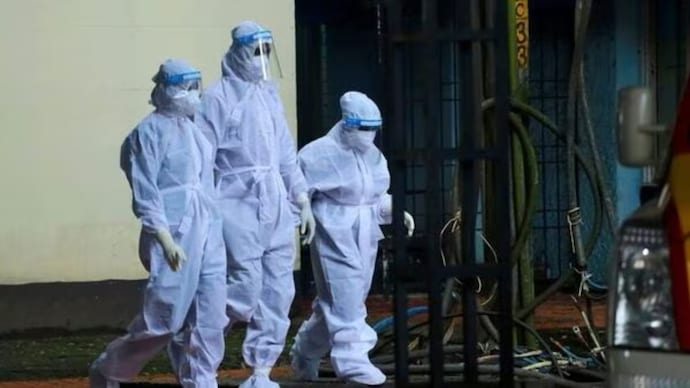A mysterious disease has taken the lives of 17 people in Badhal village of Jammu and Kashmir. The exact cause of death is being investigated.

in short
- 17 people have died due to mysterious disease in Badhal village.
- A water spring has been sealed after pesticides and insecticides were found
- A special team is investigating the cause of the disease
17 people have died due to an unknown mysterious disease in the remote village Badhal of Rajouri district of Jammu and Kashmir. The exact cause of deaths is still being ascertained.
The mysterious illness/disease, which first appeared on December 7 last year, remains a big challenge for the authorities. On December 7, five people were reported dead due to unknown reasons in Badhal village. The most affected family is that of Mohammad Aslam, who has lost 8 family members including his parents and all 6 children.
On Saturday, the Home Ministry formed an 11-member inter-ministerial team to investigate the deaths. While the high-level team reached Rajouri district on Sunday (January 19), the death toll rose to 17 after a minor girl named Yasmin died of the disease at SMGS hospital. (An affiliated hospital of the Government Medical College, Jammu).
The victim was battling for life and death for the last few days and was kept on ventilator support in the hospital. However, he died on Sunday evening.
Meanwhile, the special team held discussions with top officials in Rajouri, in which the officials briefed the team about the crisis. On Monday, the team visited the affected village and took stock of the situation.
The mysterious deaths are also being investigated by a Special Investigation Team (SIT) of Jammu and Kashmir Police. The SIT is probing the criminal conspiracy aspect in the case by interrogating the suspects and scanning their mobile phones. But till now no major success has been achieved in the investigation.
“Health and other departments of Jammu and Kashmir administration had investigated the matter. But the facts are not yet known. Honorable Union Home Minister has constituted an inter-ministerial team and they have reached Rajouri. I think the reason will be known soon.” The deaths will be known. The police have also formed an SIT to investigate other aspects of the case,” Lieutenant Governor Manoj Sinha said while speaking to the media on the sidelines of an event in Jammu on Sunday.
Jammu and Kashmir Deputy CM Surinder Choudhary also visited Badhal village on Saturday and met the families affected by the mysterious disease. He assured the people that the government is leaving no stone unturned to find out the causes of these deaths.
Expressing solidarity with the people, he said that the government will provide all necessary help to the affected families. The Deputy CM also promised to take strict action if any criminal conspiracy is found in this case.
On the other hand, the water spring, locally known as ‘Baoli’, has been sealed by the administration after samples of water from the spring confirmed the presence of pesticides and disinfectants.
“Whereas, the water samples taken from the spring (bowli) of Badhal village have been tested positive for certain insecticides/pesticides. The said stepwell has been blocked by the PHE (Jal Shakti) Division Rajouri and sealed by the concerned Magistrate. There is a fear that the tribal population of the village may secretly collect the flowing water of the spring, therefore, Tehsildar Khawas will ensure that no villager uses it for any purpose. Do not use spring water for…” read the order issued by the Additional Deputy Commissioner, Kotranka (Rajouri).
Experts from top medical institutions including Indian Institute of Virology, Pune, PGI Chandigarh, AIIMS Delhi have already visited the affected village of Rajouri and collected samples.
Based on investigations and studies conducted by experts, some neurotoxins were found in the victims. However, no viral or bacterial infection has been found. Symptoms of affected individuals were fever and sweating.
Neurotoxins are a group of chemicals diverse in nature, which disrupt the functioning of the central and peripheral nervous systems through various mechanisms.
Some of the most common neurotoxins that affect the brain are: Alcohol (Ethanol): Chronic use can cause brain shrinkage, cognitive decline, stroke, and behavioral disorders; Nicotine: It can cause brain shrinkage, stroke, and cognitive decline; Drugs of abuse such as methamphetamine, cocaine: They can cause long-term cognitive and behavioral disorders; Pesticides such as organophosphorus compounds and carbamates: They cause muscle weakness, seizures and encephalopathy and can be life-threatening; and heavy metals such as mercury, lead and arsenic.
Other examples include monosodium glutamate, used as a flavor enhancer, and acrylamide, found in some baked and fried foods.
According to Dr. Pramod Krishnan, HOD and Consultant, Neurology Epileptology and Sleep Medicine, Manipal Hospital Old Airport Road, “The list is expanding with the increasing presence of chemicals in every aspect of our lives. Through education, lifestyle Limiting exposure to such chemicals and dietary interventions are important for our health.”